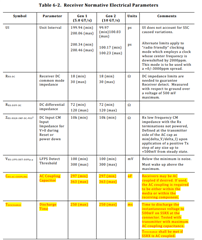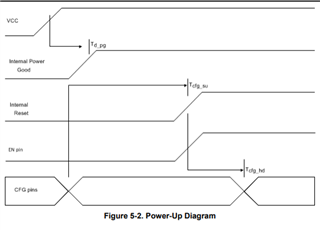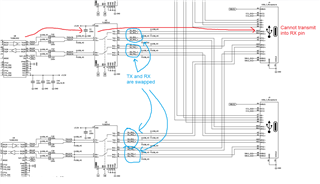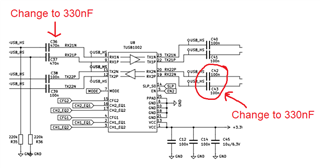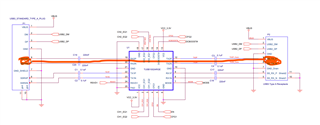Other Parts Discussed in Thread: TUSB1142
Tool/software:
For inhouse testing purpose I need to switch USB 3.1 signals and power delivery between two sinks.
I did a design using 4 passive switches, controlled and monitored by an MCU.
It basicly behaves as one just would plug the whole cable to the desired output.
The signal switching part seems to work as intended, but I assume, the signal degradation is an issue in my setup. I don't have an scope fast enough to verify.
So the signal chain now looks as follows:
(HOST) -- (USB C to USB C passive Cable 1m) -- (SWITCH PCB) -- (USB C to USB C passive Cable 1m) -- (DEVICE)
After checking the USB 3.x standard for 10Gbps only allows for 1m of cable in the signal chain.
So I did a redesign of my circuit and added two TUSB1002A to the high speed signals to boost the signal.
My questions:
1. Is it possible to use the TUSB1002A in this application?
2. Did I wire in the TUSB1002A in the correct way?
3. For my understanding it should be okay to change the 330nf coupling capacitors to 470nf, am I wrong?
4. As I understood the configuration pins only get sampled on EN rising edge. Due to lack of available GPIO I tied all the configuration pins of the two TUSB1002A togther. They only have individual gpio for the EN lines. I plan to configure them one after the other triggered by the EN line. Will there be any issues doing so?
5. Are there any issues in general with my layout of the high speed signals? I routed them as differential pairs with 90 Ohms impedance, solid copper under the traces as reference plane. Not clear about my layout of the pull-down resistors on the 470nf coupling capacitors (R14/R15 , R35/R36) can this be done better?
Attached is schematic of the switching circuit and the boards copper layers. and a screenshot of the PCB
I would be happy if I could get some feedback.



